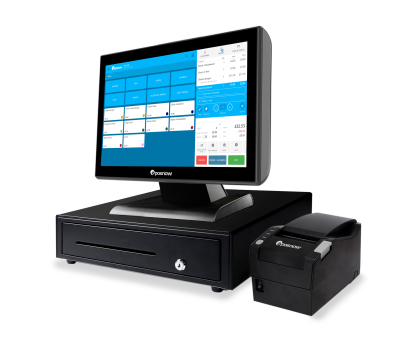What is Shelf Wear?
Shelf wear is part and parcel of running a retail business. Sometimes, items get damaged and there’s just not anything you can do about it. Understandably, this can be very annoying for business owners, especially if the business is operating on very low-profit margins.
Managing your inventory is an essential part of running a business. If you don’t look after your stock, you may end up with products you can’t sell due to avoidable damage, which will lead to shrinkage.
In this blog, we’ll explore the subject of shelf wear in detail. This will include what shelf wear is, how it can affect your inventory, how to avoid it, and what to do with your products that suffer shelf wear.
What is shelf wear?
Shelf wear is a form of damage that can develop on items removed and replaced on a shelf. It can also refer to damage caused by rough handling by staff members and customers. Shelf wear can sometimes be caused by improper storage in the stock room or on the shelves.
Generally, in most successful retail stores, most items won’t have the chance to develop shelf wear as they will be handled correctly and sold quickly. Shelf wear could be seen as damage indicative of neglect and misuse, though this is not always the case.
While shelf wear is most prevalent in bookshops where thousands of books are tightly packed together, any retail business that displays stock can experience shelf wear. It all depends on how the items in the shop are handled and stored.
Why does it matter?
Shelf wear matters for one simple reason: if the stock in your business is damaged, your customers will be less inclined to buy it. Unless your shop explicitly sells second-hand items, your customers will expect your products to be new and in mint condition.
If your stock isn’t up to the standard of the shops around you, shoppers will take their business elsewhere. Offering sub-standard items in your business will generally have a negative impact on the customer experience in your shop and your reputation in the wider community.
How can it affect different products?
While there is some variation in how different products are damaged by shelf wear, there are some general things to look out for. The clue is in the name. If we take books as an example, shelf wear quite literally wears the book away as it’s handled and taken on and off the shelf. This damage can manifest as spine creases, worn-away covers, and sun damage.
Shelf wear can be a major issue for supermarkets. Damaged food items are off-putting at best and actively dangerous at worst. Bruised bananas, dented cans, and crushed cereal boxes are very difficult to sell. Some supermarkets offer shelf wear-damaged goods for sale at a discounted price, though this can’t be done with perishable goods.
Gain all the advantages of a POS system with detailed, flexible, downloadable reports, and so much more:
- Manage and update products quickly with easy-to-use software
- Expand your business into multiple channels and integrate with a variety of online platforms
- Manage multiple locations and salespoints with multi-site management
- Keep queues short with streamlined, modifiable sales processes
- Choose a setup that suits you with software and hardware options

How to avoid shelf wear
On a long enough timeline, shelf wear is inevitable. Luckily, as we mentioned above, products aren’t generally on the shelves long enough to get damaged. With that being said, you should still take steps to mitigate potential damage. We’ve included some tips below.
Staff training
One of the main culprits behind shelf wear is improper handling and storage. While customers may mishandle your products from time to time, this is an issue with your staff members as they’re responsible for getting items out in front.
One way to make sure your product avoids shelf wear is by investing in ongoing staff training. A trained team is a competent team. A competent staff member will better know your products and how to handle and store them properly. This will reduce the chance of shelf wear developing.
Evaluate your storage
Think about where you store your stock before it gets put out on the shelves. Is it dry, shaded, and not too hot or too cold? If the answer to any of those questions is yes, you may need to reevaluate where and how you store your products.
Depending on what you sell, your products will need different storage to ensure they’re shelf ready. For instance, different food items need a wide variety of different storage, while books just need somewhere dry and out of the sun. Take time to learn what your products need to be their best.
The financial fallout of shelf wear
If you don’t get a handle on shelf wear and let the problem spiral, you could face some serious financial effects. Consumers want their products new and shiny, and visibly damaged items are hard to sell.
If you do make the choice to sell shelf-worn items, you will most likely need to offer them at a discounted price. If you’re working on tight margins, this will take a large chunk of your profits.
Manage your inventory with power POS
Managing your inventory is vital to preventing shelf wear. The Epos Now Complete Solution comes with powerful inventory tools that will help you stay on top of your stocks. The more control you have, the easier it is to prevent damage.
If you’re interested in hearing more about Epos Now, get in touch with our expert team below.
